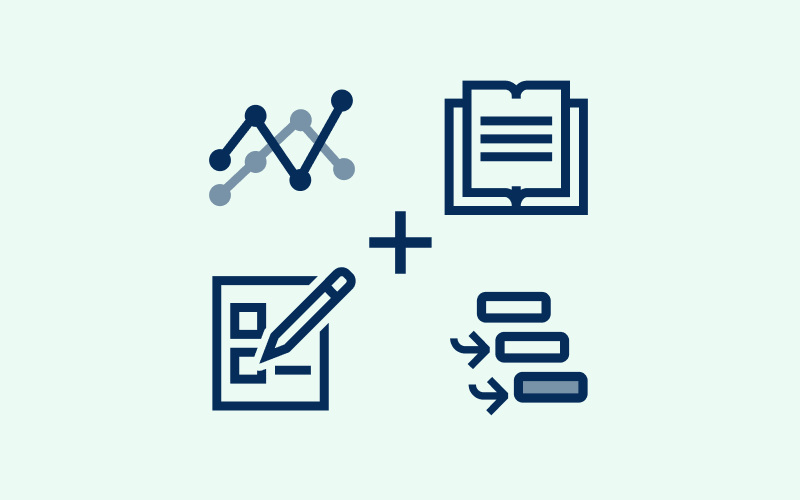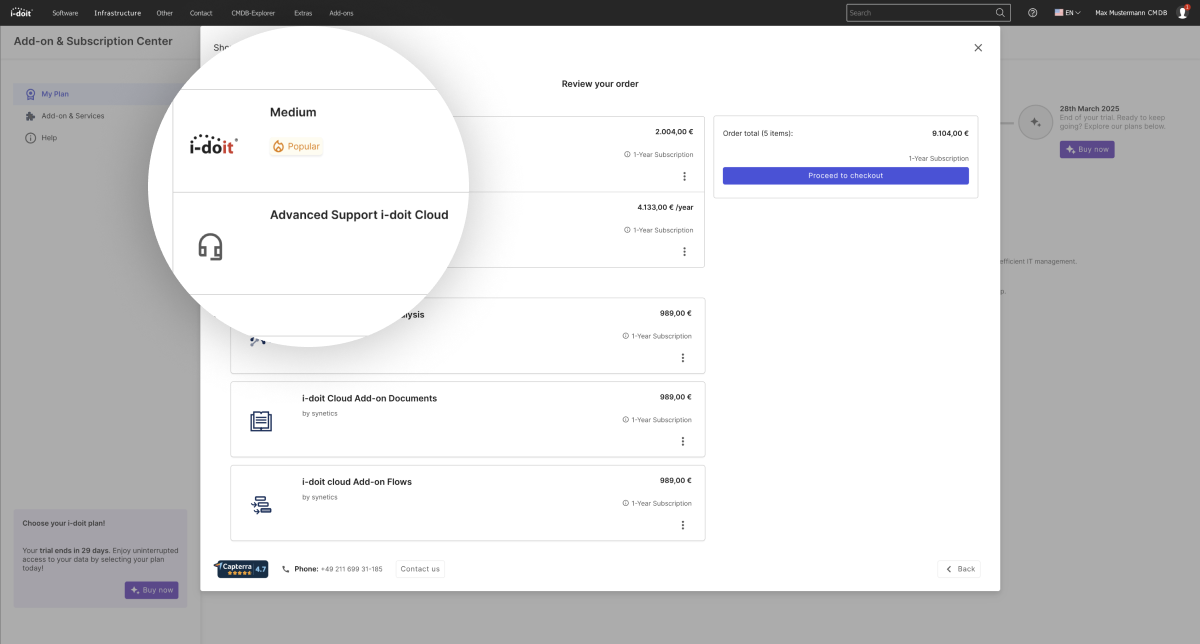The realisation of an ITSM system network brings enormous advantages in the monitoring of systems, automatic initialisation of processes and control of information. The i-doit CMDB has numerous interfaces to directly connect third-party applications such as monitoring systems, service desks or discovery tools. In most cases, information is exchanged bi-directionally via the free API. Thus, i-doit offers a reliable basis for implementing IT Service Management.
In this article, we present use cases for effectively monitoring processes and systems and automatically initialising processes. A system network consisting of the i-doit CMDB, the Service Desk Zammad and the monitoring tool Checkmk serves as the basis.
What is Zammad?
Zammad is an open source HelpDesk system. It is available under the GNU AGPL v3 and can be used freely. The Ruby on Rails-based system was developed by Martin Edenhofer, who previously worked on the (OTRS)) Community Edition ticket system.
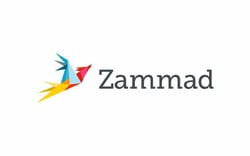
Since the frontend was realised with common web technologies (HTML5, CSS and Javascript), Zammad can be used via the web browser.
What is Checkmk?
Checkmk is a monitoring system developed since 2008. The system is offered in different editions. The open source version is based on Nagios and extends it with additional functions of its own.
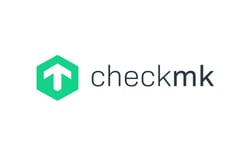 The paid variants (Enterprise and Managed Services), on the other hand, are based on a specially developed core. Checkmk allows the monitoring of a large number of systems. These include cloud systems such as AWS and Kubernetes. The agents that can be installed on systems to monitor them are available for a total of 11 operating system platforms.
The paid variants (Enterprise and Managed Services), on the other hand, are based on a specially developed core. Checkmk allows the monitoring of a large number of systems. These include cloud systems such as AWS and Kubernetes. The agents that can be installed on systems to monitor them are available for a total of 11 operating system platforms.
Use-Case #1: Automatic ticket opening in case of failed systems
Linking Checkmk and Zammad
Anyone who has a monitoring system like Checkmk in operation will have activated the notification function via email. If a system fails, an email is sent to one mailbox or several recipients, depending on the configuration. The “right” personnel are informed promptly and failed or disturbed systems can be restored quickly. All in all, it’s a good approach. However, it could be even better!
The problem: The further course of troubleshooting is often not recorded. No one has documented which steps were taken to remedy the malfunction. If the problem occurs again, the deployed staff must start again from scratch.
What is started by email is usually continued that way. If a staff member now has to take over, emails are forwarded again without taking the necessary care to ensure completeness. As a rule, there is no continuous documentation of the process.
The better way: Consolidate all information about the incident in one ticket. By linking Checkmk and Zammad, a new ticket is automatically created when a system fails. In our use case example, the server “server-125.i-doit.com” has a failure and is in the “DOWN” state.

This detected fault is reported to the Zammad Service Desk via the interface. Here, a new ticket is automatically created and completed with important information.
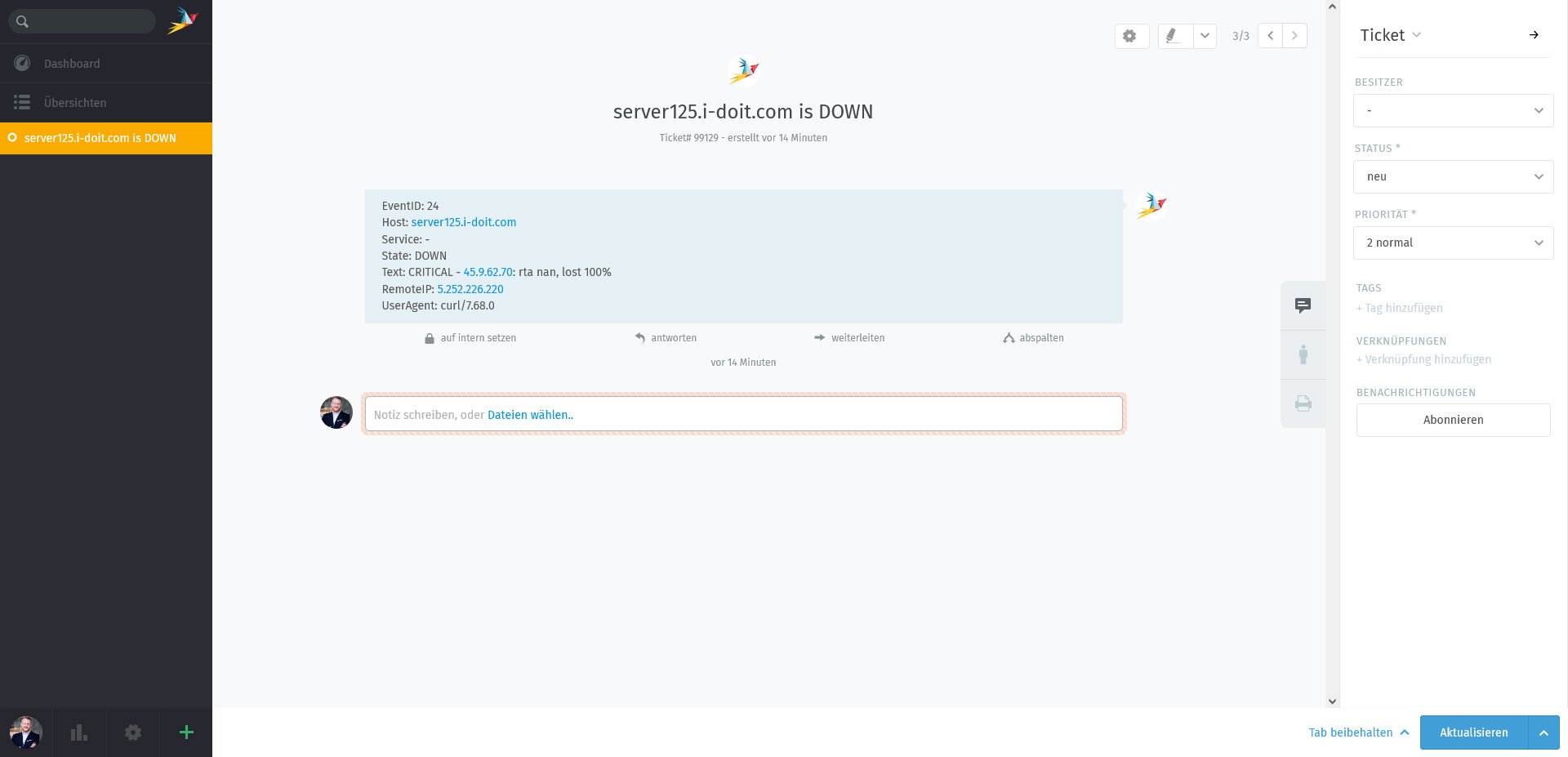
Depending on the configuration, Zammad can perform the creation and assignment of tickets to specific persons or groups.
Variant-1: The tickets are collected in a ticket pool with the status “open”. There, the tickets can be opened and employees can be assigned manually.
Variant-2: The tickets should be automatically assigned to a certain department or employee. The Zammad host or Zammad service configuration can also be used to automatically link the asset from i-doit. Our partner don’t panic has compiled the necessary configurations for you as a how-to and will support you with the implementation if required.
Use-Case #2:
Create Assets from i-doit in Checkmk
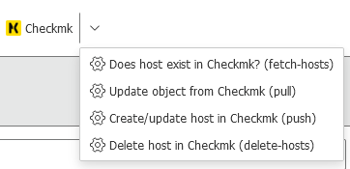 Your processes can be designed in many ways. i-doit offers various ways to exchange information between monitoring and CMDB. With the Checkmk add-on, information can be transferred bi-directionally between i-doit and Checkmk (from version 1.5). A control panel is available in each object that has the Checkmk host category activated. Various functions can be executed directly via this panel.
Your processes can be designed in many ways. i-doit offers various ways to exchange information between monitoring and CMDB. With the Checkmk add-on, information can be transferred bi-directionally between i-doit and Checkmk (from version 1.5). A control panel is available in each object that has the Checkmk host category activated. Various functions can be executed directly via this panel.
Check whether host is present in Checkmk
It can be checked directly from i-doit whether the host was created in Checkmk.
Update object from Checkmk (pull)
Transfer of information from Checkmk to i-doit. Changed IP addresses or host names can be updated at the touch of a button.
Create/update hosts in Checkmk (push)
For the entry of hosts in Checkmk, these can be transferred to Checkmk with the entered values such as IP address and host name and thus created as a new host. If the host exists, it is updated instead.
Delete hosts in Checkmk
When the end of the life cycle is reached, a host can be deleted from Checkmk.
Hardware / Software Inventory
Via the Checkmk Inventory Plugin, hardware and software information from Checkmk can be transferred directly to i-doit. In this way, your documentation has direct information from the monitoring. The live status of systems can also be queried directly in the IT documentation. Staff members without access to monitoring can immediately see the status of systems and services.
Use-Case #3:
Linking Tickets with Assets
The third and equally important use case is documenting tickets in the CMDB. If every incident is recorded in Service Desk Zammad, it makes sense to link these tickets in the CMDB with the associated assets such as servers, clients, software or licences. In case of incidents, needed information about the devices or solutions can be found directly in the IT documentation.
First,the object type category can be selected via the interface.
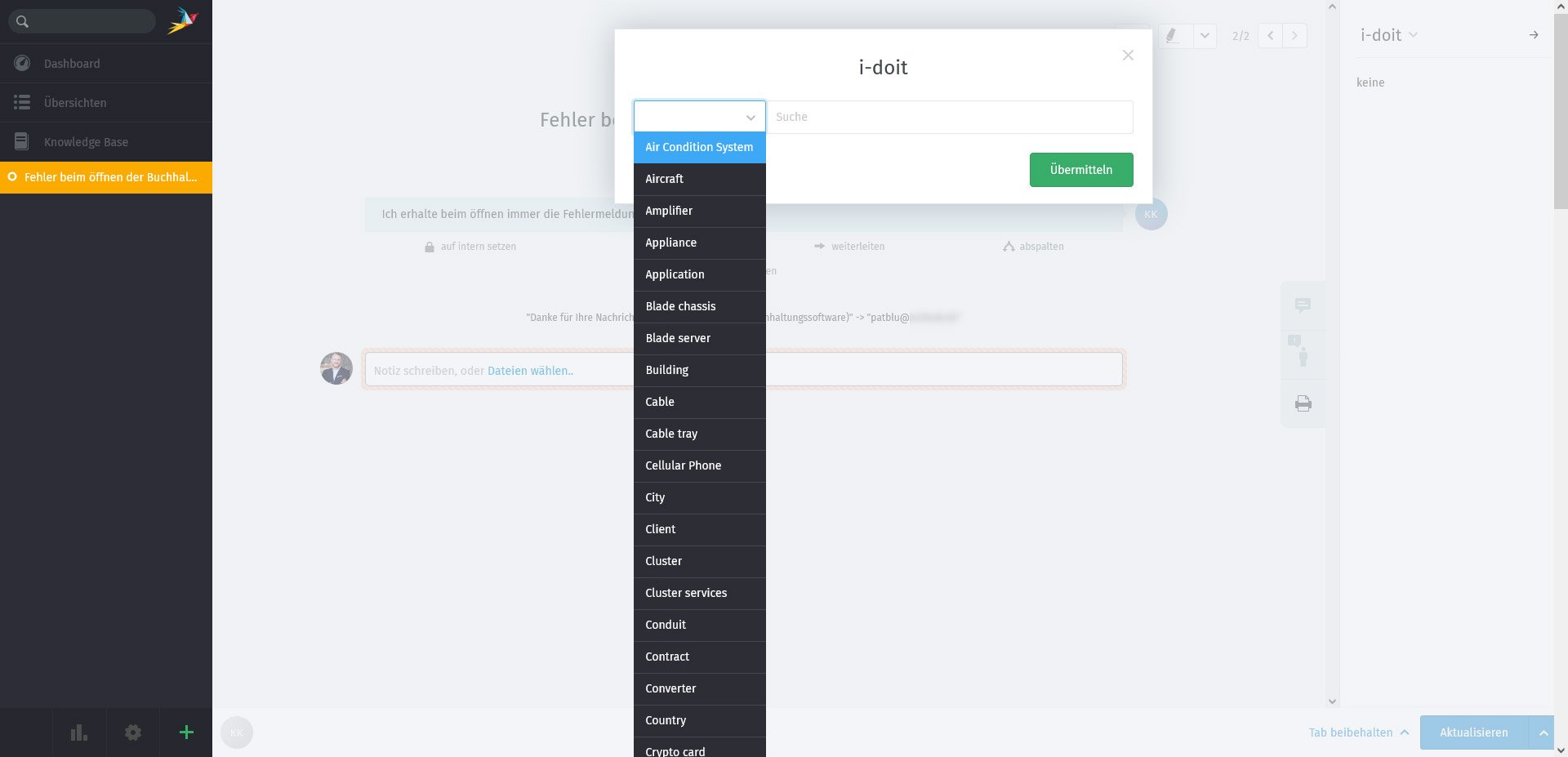
After selecting an object type, the desired assets can be selected and linked. All assets from the CMDB are available for selection. Whether contracts, servers, clients, printers or software: Everything that has been documented can be linked to the ticket.
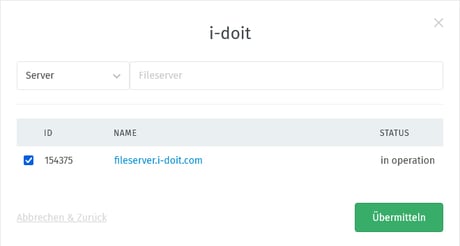
The object is linked directly in the ticket and can be called up with one click. All important information is available to the service desk staff directly in the ticket. Even if the agent changes – e.g. in the case of escalation to the next higher instance or transfer to another department – confusion of devices is prevented.
Use-Case #4:
Linked user workstations in the service desk
Zammad allows the creation of user-defined fields. These can be used, for example, to directly link the workplaces from i-doit.
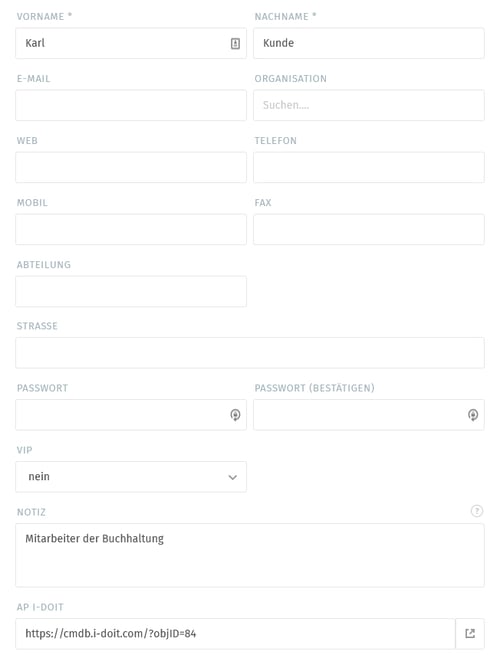
The benefit: When the corresponding user opens a new ticket, the agent sees the assigned workstation directly in the customer information. With one click, the location of the workstation is visible, which devices the user has and how he or she can access them.
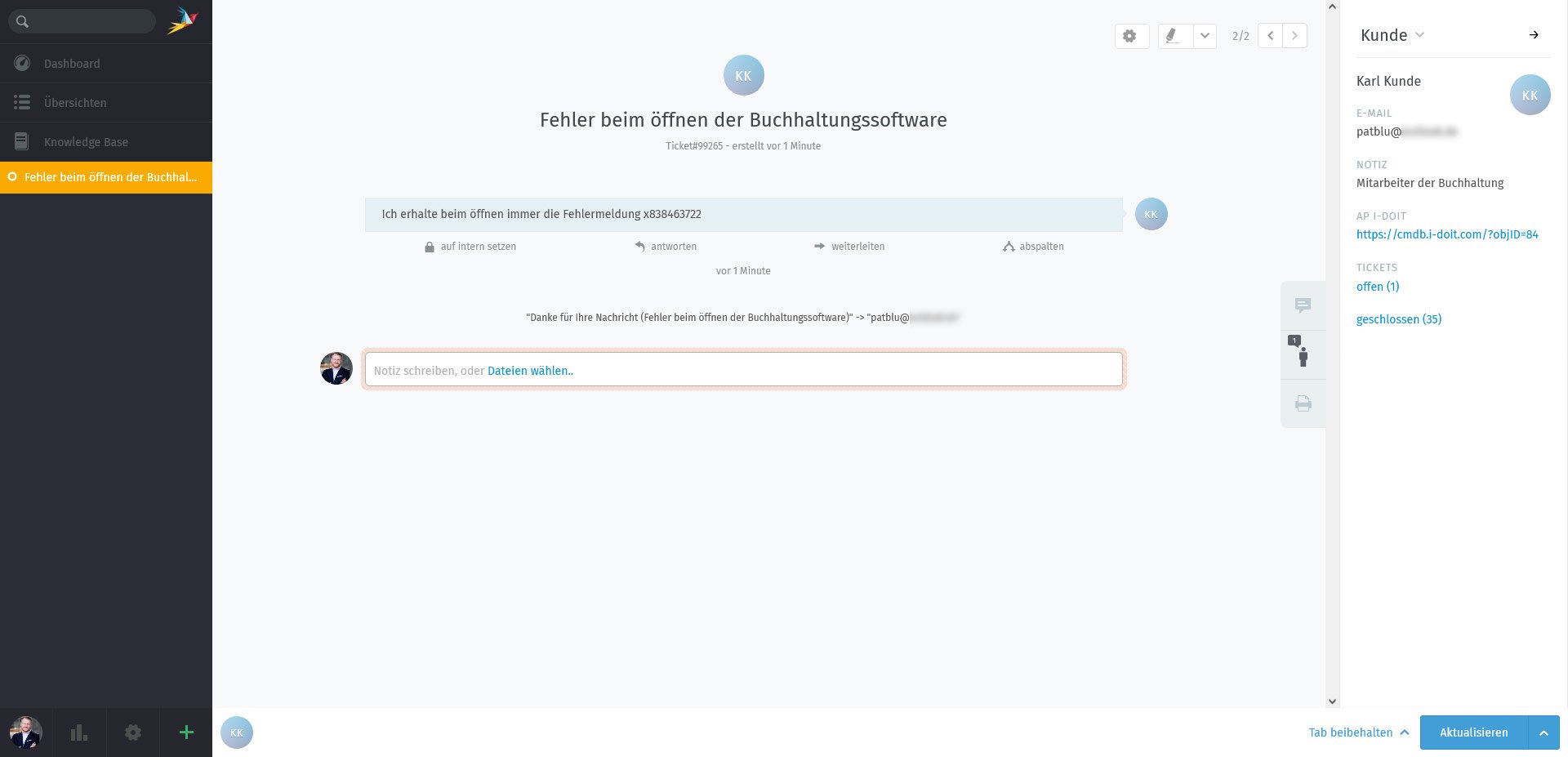
Through this link, all of the user’s assets and the associated contracts, applications and licences can be directly identified in the event of a support case.

With IT Service Management to more customer-oriented service quality
Simplify the management of services significantly with an intelligent system network. With the i-doit tools, Checkmk and Zammad, you can use information across systems. You initialise and control processes (automatically). And you monitor systems and services in real time. When faults occur, you co-ordinate the right information to the right people.
The use cases described here are only some of the possibilities of an IT system network with i-doit. If you would like to achieve a higher quality of service and better manage services, try i-doit for 30 days free of charge or contact one of our partners directly with your ITSM project.

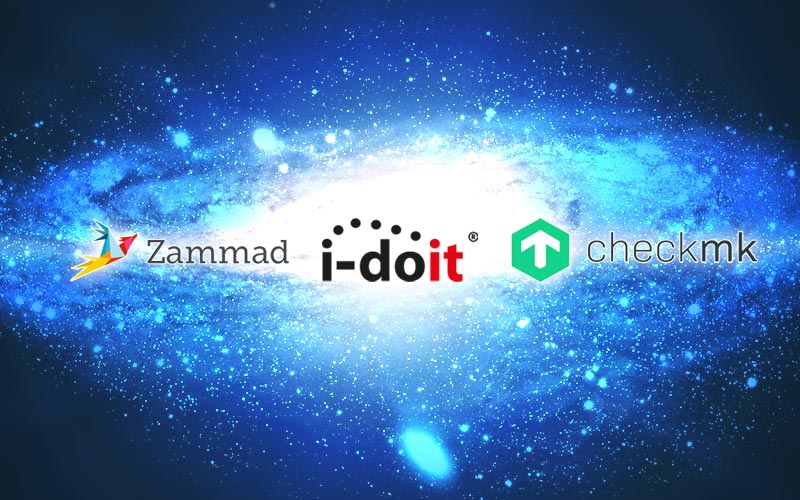




 Your processes can be designed in many ways. i-doit offers various ways to exchange information between monitoring and CMDB. With the Checkmk add-on, information can be transferred bi-directionally between i-doit and Checkmk (from version 1.5). A control panel is available in each object that has the Checkmk host category activated. Various functions can be executed directly via this panel.
Your processes can be designed in many ways. i-doit offers various ways to exchange information between monitoring and CMDB. With the Checkmk add-on, information can be transferred bi-directionally between i-doit and Checkmk (from version 1.5). A control panel is available in each object that has the Checkmk host category activated. Various functions can be executed directly via this panel.




